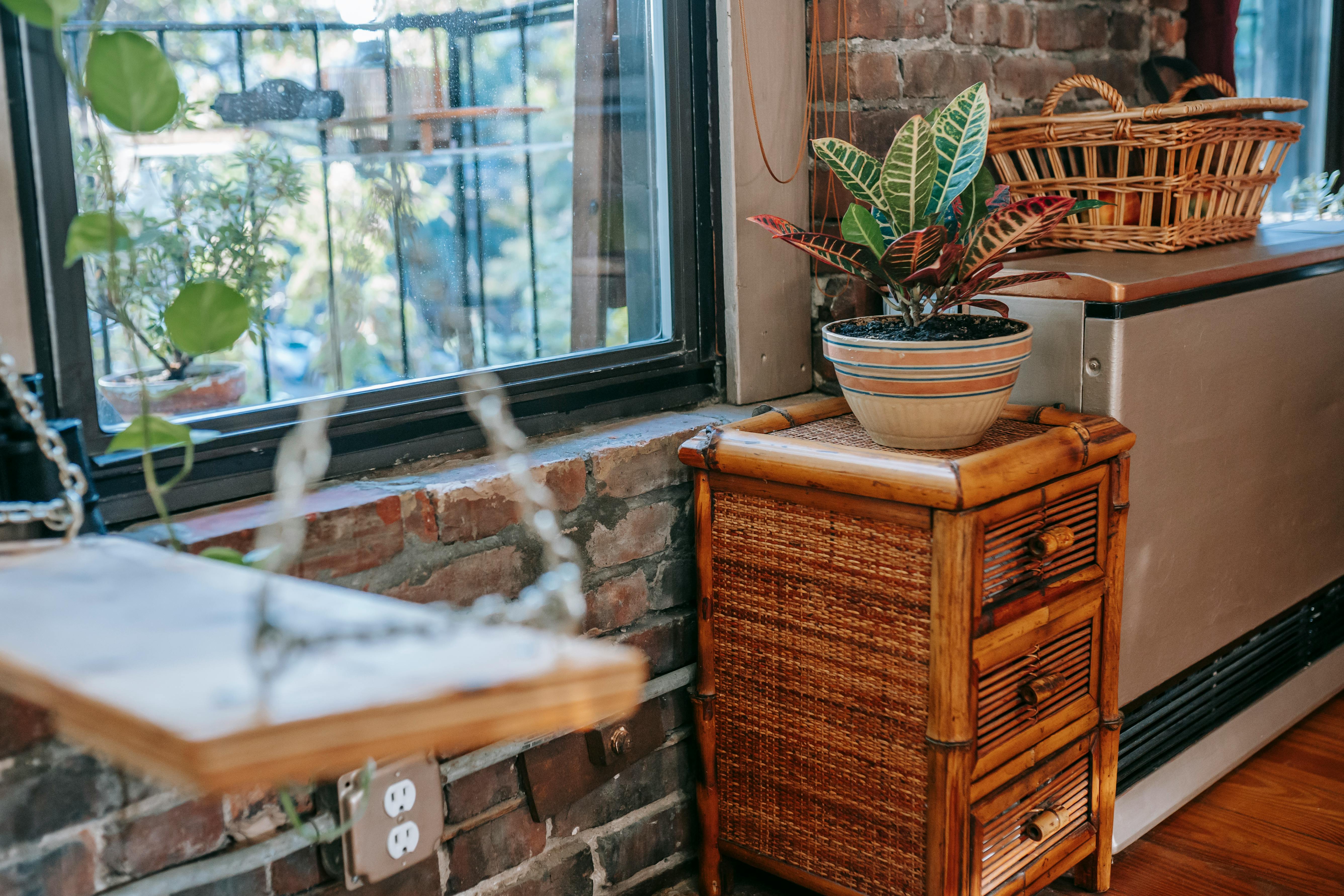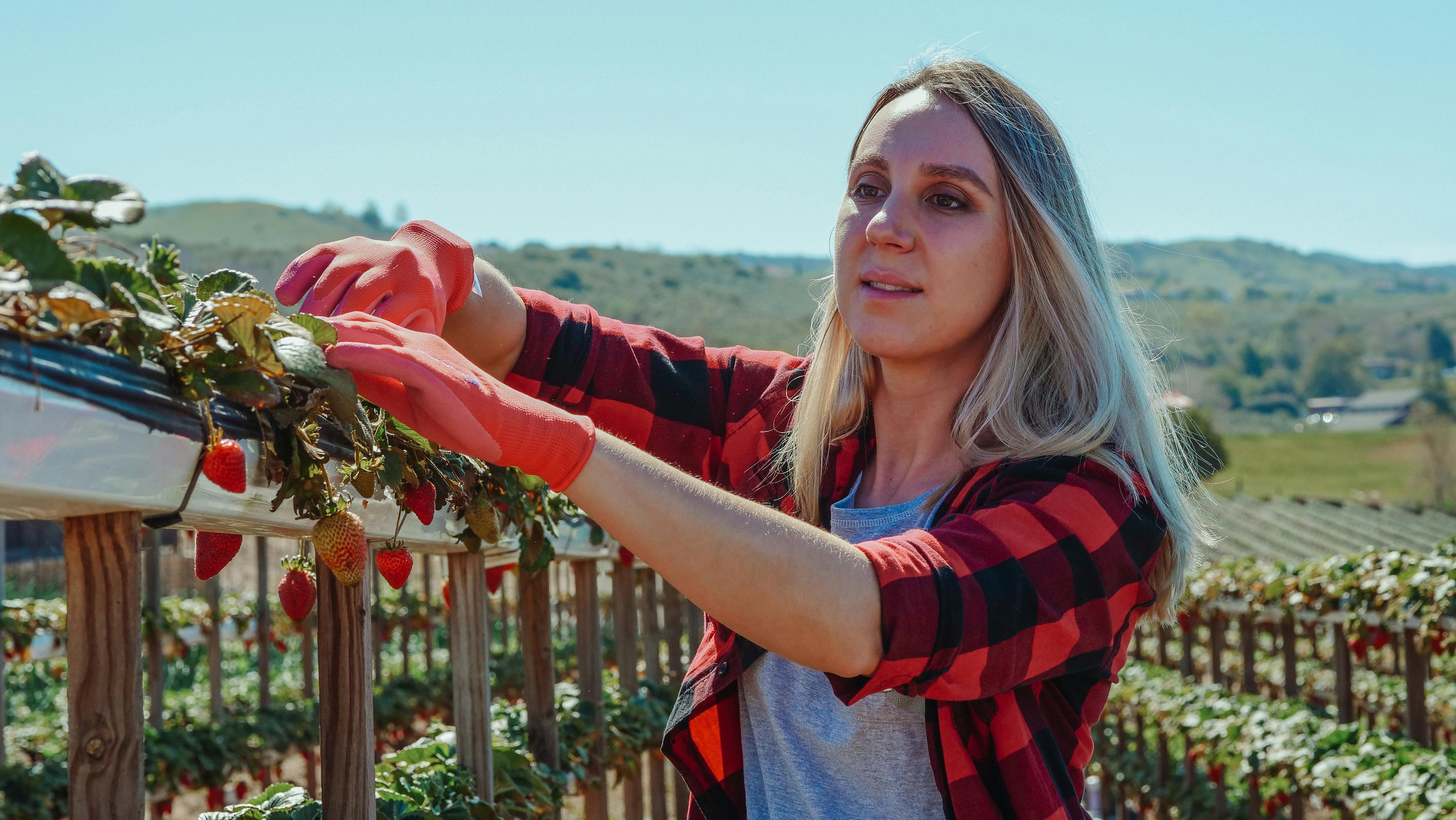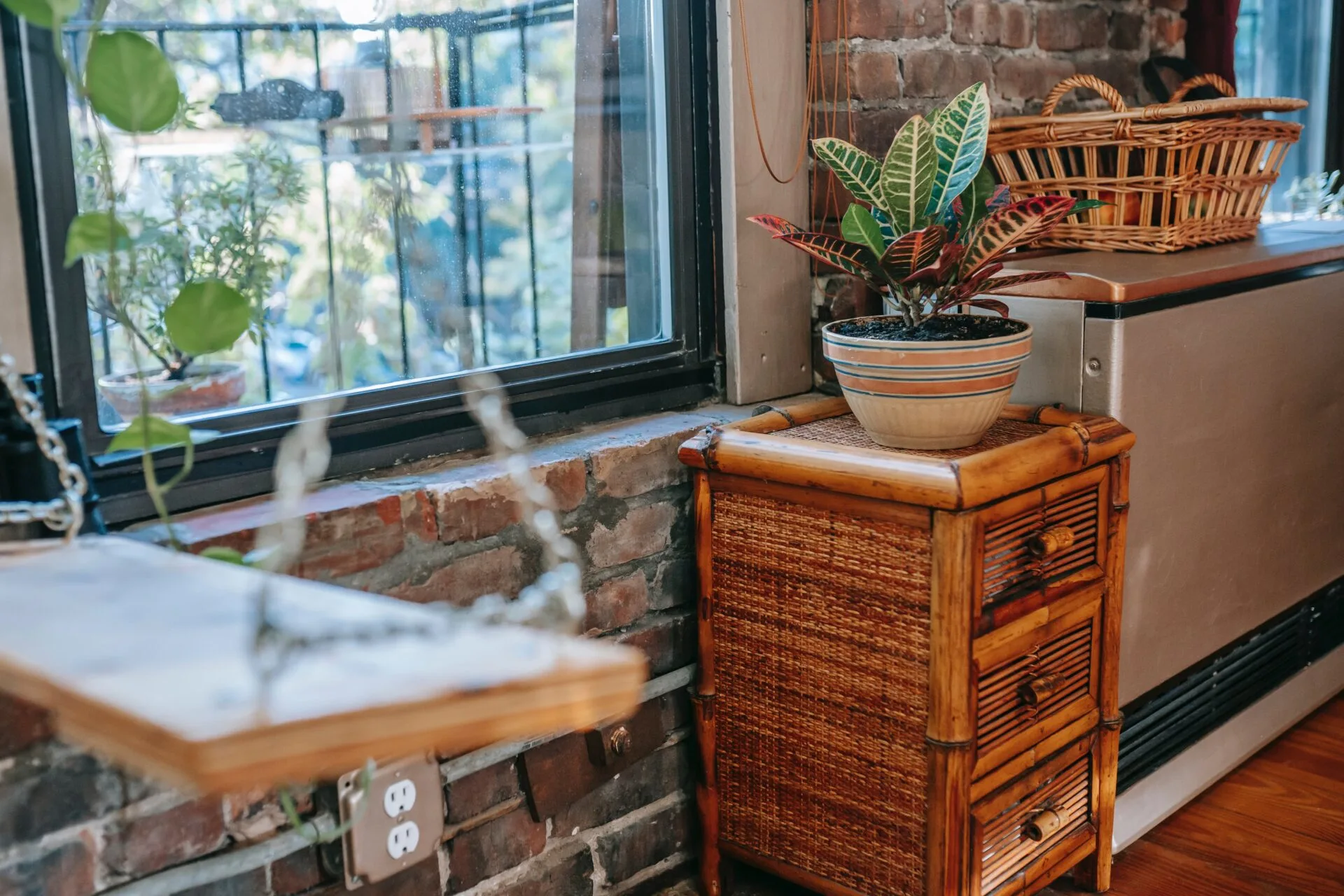If you love the taste of fresh strawberries, you can easily grow your own in a hanging basket. Planting strawberries in a hanging basket is fairly easy and requires minimal maintenance. This guide will provide an overview of how to plant strawberries in a hanging basket, from selecting the right strawberry variety to how to care for them after planting.To plant strawberries in a hanging basket, you will need potting soil, a hanging basket, strawberry plants, fertilizer, and a watering can. Before planting, make sure the basket is deep enough to hold enough soil and has drainage holes at the bottom. Fill the basket with potting soil up to 2/3 full. Place the strawberry plants in the center of the basket and spread the roots out evenly. Fill in around the roots with more potting soil and press lightly to secure them. Fertilize according to package directions and water thoroughly. Hang in a spot that receives at least 6 hours of direct sun each day. Water as needed to keep soil moist but not soggy.
Choosing The Right Hanging Basket
Choosing the right hanging basket can be a challenge. There are many different types and styles of hanging baskets available, so it can be difficult to decide which one is right for you. It’s important to consider the size, material, and design of the basket before making a purchase.
Size is an important factor when selecting a hanging basket. You’ll need to choose one that fits the space you have available and is appropriate for the plants you plan on growing. Smaller baskets are great for smaller plants and flowers, while larger baskets can accommodate larger plants and flower varieties.
The material of the basket is also important. Most baskets are made from plastic or metal, but there are also some that are made out of natural materials such as wicker or bamboo. Plastic baskets tend to be more affordable and lightweight, while metal baskets tend to be heavier and more durable. Natural materials offer a unique look but may require more maintenance than other materials.
The design of the basket should also be considered when purchasing a hanging basket. Some designs feature multiple tiers or pockets for planting multiple varieties of flowers or plants in one space, while others are designed with a single pocket for easy access to water and nutrients. Additionally, some designs feature decorative elements such as bright colors or patterns that can add a touch of style to your garden or patio area.
When selecting a hanging basket, it’s important to consider all these factors before making your purchase. The right choice will depend on your budget, gardening needs, and personal preference. With so many options available, you’re sure to find the perfect hanging basket for your outdoor space!
Preparing The Basket For Planting
When it comes to planting a basket, preparation is key. Whether you’re planting an annual or perennial, the same basic steps should be taken to ensure a successful planting. The first step is to select the right size and type of basket for your plants. Make sure the basket has enough drainage holes for excess water and air circulation. If not, drill some extra holes in the bottom of the basket to allow water to escape. Next, line the basket with moss or other material that will help keep it moist and prevent soil from leaking out. Once this is done, fill the basket with quality potting soil and gently press down on it to make sure it’s firmly packed in place. Finally, add fertilizers or compost if desired, and begin planting your desired flowers or shrubs in the basket.
It’s important to keep an eye on your planted baskets throughout their growth cycle. Make sure you water them regularly and provide them with adequate sunlight for healthy growth. If you notice any signs of wilting or discoloration, add additional water or fertilizer as needed to keep your plants healthy and thriving. With regular care and maintenance, you can enjoy beautiful plants in your hanging baskets all season long!
Picking The Right Strawberry Plant Variety
Strawberries are a delicious and healthy fruit that can be enjoyed fresh or in a variety of recipes. Growing strawberries at home is a great way to add fresh, organic fruits to your diet. However, it’s important to pick the right strawberry plant variety for your climate and growing conditions.
When choosing a strawberry plant variety, the first thing you need to consider is where you will be planting them. Different varieties of strawberries thrive in different climates, so it’s important to choose one that is suited for your area. You should also consider how much sun and shade the plants will get each day. Some varieties can tolerate more shade than others, so make sure you choose one that will do well in your growing environment.
Another factor to consider when picking a strawberry plant variety is how long the plants will last before needing to be replaced. Some varieties are better for short-term growing while others are good for long-term growth. If you want to have a continuous supply of fresh strawberries throughout the summer months, then you should choose a variety that is good for long-term growth and is resistant to disease and pests.
When it comes time to harvesting your strawberries, some varieties may produce larger berries than others. If you want large berries then look for varieties that produce large fruit but take longer to ripen and require more care when harvesting. For those looking for smaller berries that ripen quickly, there are many varieties available as well.
Finally, don’t forget about taste! Different strawberry plant varieties have different flavor profiles so make sure you choose one that has the flavor profile you prefer most. If you want an especially sweet berry then look for varieties known for their high sugar content or if tartness is more your thing then look for those with low sugar content but higher acidity levels instead.
Picking the right strawberry plant variety can make all the difference when it comes to growing healthy and delicious strawberries at home. Be sure to take into account where you will be planting them, how long they will last before needing replacement, size of berries produced, and flavor profile before making your final choice!
Filling the Hanging Basket with Soil
Filling a hanging basket with soil can be quite a challenge, especially if you have never done it before. The most important part of this process is to make sure that the soil is evenly distributed throughout the basket, as any uneven distribution will cause the plants to not receive an adequate amount of water and nutrients. In order to ensure even distribution, it is necessary to use a trowel or other suitable tool to spread the soil. Start by filling one corner of the basket with soil and working inwards towards the center. Make sure that you are filling each area evenly and that there are no air pockets in between layers of soil. Once you have filled up the basket, tap it gently on a hard surface to ensure that all of the soil is settled properly. Finally, water your plants thoroughly to help them establish their roots in the new environment.
It is important to remember that when filling a hanging basket with soil, it is essential that you use only quality potting mix or compost, as this will provide your plants with all of their nutritional needs and allow them to thrive in their new environment. Additionally, make sure that you are using enough soil so that your plants have enough space for their roots to grow and spread out. Finally, ensure that there are sufficient drainage holes at the bottom of your hanging basket so that excess water can escape easily and avoid causing root rot or other issues for your plants.

Planting and Spacing The Strawberries
Planting and spacing strawberries for a successful harvest requires careful consideration. When it comes to planting strawberries, the recommended spacing is six to eight inches apart in rows that are three feet apart. This gives the strawberry plants enough room to grow and develop without overcrowding. It is important to note that if the plants are overcrowded, it can lead to poor fruit production and disease. Additionally, when planting strawberries, it is best to plant them in a spot that receives at least six hours of full sun each day.
When it comes to spacing your strawberry plants, you should also consider how much room they will need when fully grown. If you are growing June-bearing varieties of strawberries, which produce one crop per season, then you will need more space between the plants than if you are growing ever-bearing varieties, which produce two crops per season. This is because June-bearing varieties tend to be larger and more vigorous than ever-bearing varieties.
Once your strawberry plants are planted and spaced properly, it is important to water them regularly throughout the growing season. While they do not require a lot of water, it is important that they receive enough moisture so their roots can remain hydrated and healthy. Additionally, mulching around your strawberry plants can help keep their roots cool in hot weather and help retain moisture in dry climates.
Finally, properly spacing your strawberry plants can help ensure a healthy harvest come picking time!
Watering
Watering strawberry plants is an important part of growing healthy and productive plants. Strawberries need regular watering to keep the soil moist, but not waterlogged. Water your strawberry plants in the morning, when temperatures are cooler and there is less risk of evaporation. Water deeply so that the water reaches down to the roots. Avoid wetting the foliage, as this can lead to fungal diseases. Make sure to water your plants consistently, as they may not survive periods of drought or dryness.
Feeding
Strawberry plants benefit from being fed regularly in order to maintain their health and productivity. Use a balanced fertilizer such as 10-10-10 or a fertilizer specifically designed for strawberries. Apply the fertilizer according to directions on the package, usually every two weeks during spring and summer when plants are actively growing. Stop fertilizing in late summer or early fall when growth slows down and fruit production starts to decline. Avoid over-fertilizing your plants, as this can lead to weak growth and poor fruit production.
Pruning Your Strawberry Plants
Pruning your strawberry plants is an important part of maintaining healthy, productive plants. Proper pruning helps to keep the plants vigorous and productive for many years. Pruning also helps the plant produce larger fruits with higher yields. If done correctly, pruning can also help reduce pest and disease problems.
To properly prune your strawberry plants, start by removing any dead or damaged leaves or stems. This should be done throughout the growing season, as needed. Next you should remove any runners that have formed off of the main plant. Runners are baby plants that form at the end of a stem and can take away energy from the main plant if left unchecked.
Once all of the dead or damaged parts of your plants have been removed, you’ll want to begin thinning out the center of your plant. This will help ensure good air circulation between all of your plants and will help keep them from shading each other out and competing for light and nutrients. When thinning out your strawberry plants, make sure to leave at least two healthy leaves on each stem that you remove so that it can continue to produce fruits until it produces runners of its own later in the season.
Finally, make sure to trim back any overgrown stems or branches that are reaching beyond their normal height or width. This will help keep your strawberry plants compact and full instead of tall and spindly looking which can lead to poor yields at harvest time.
By following these simple steps when pruning your strawberry plants, you’ll be able to enjoy healthier, more productive strawberries for many years to come!

Conclusion
Planting strawberries in a hanging basket is a great way to bring your garden closer and enjoy fresh strawberries. With some soil, fertilizer, and the right plants, you can have a thriving strawberry patch that will last for years. By following the steps above, you can ensure that your hanging basket will be successful and provide you with sweet and delicious strawberries.
Hanging baskets are an easy way to add beauty to any outdoor space and provide a unique way to grow fresh fruit. With some preparation and care, you can enjoy the sweet taste of home-grown strawberries all year round. No matter how much experience you have with gardening or how much space you have available, planting strawberries in a hanging basket is an easy and rewarding activity that anyone can do!



